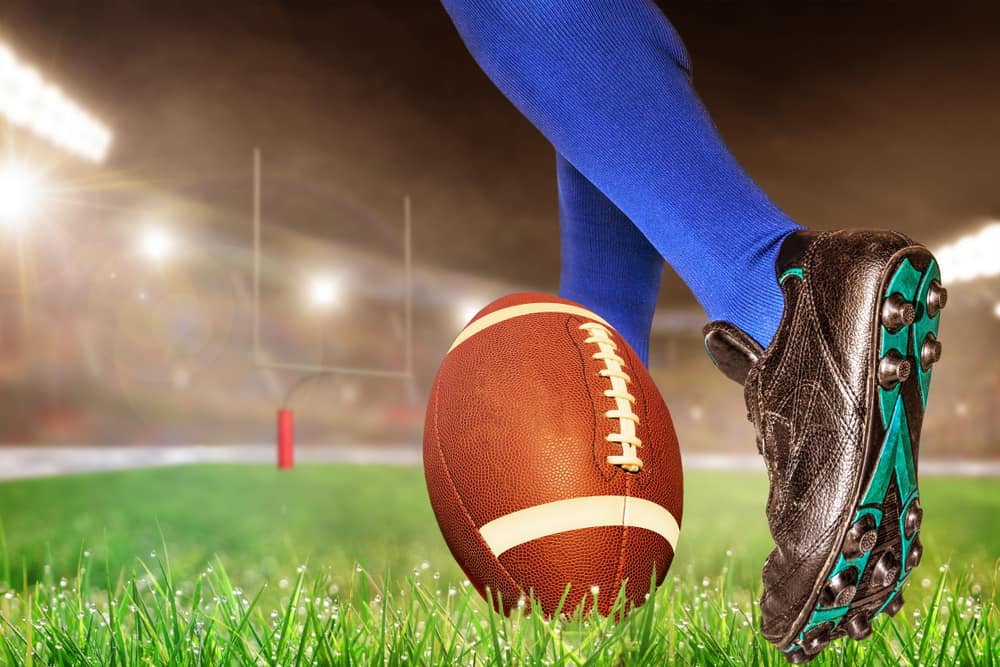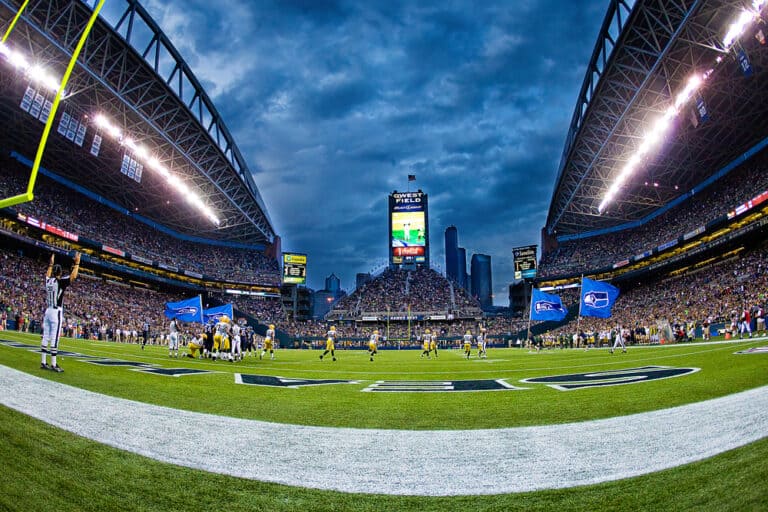Why Do Field Goal Kickers Kick From The Side?
With all its rules and regulations, American football can sometimes be hard to understand, especially for people outside the United States. Apart from those rules, the athletes do things in a certain way which brings us to the question of why field goal kickers kick from the side.
There are several reasons why a field goal kicker will step to the side before taking a kick; it could be that they don’t have enough space. However, taking a few steps to the side most often helps the kicker with accuracy and power. You get more power transfer from your hips by going at an angle.
I know it may seem like a straightforward question. However, the answer can be rather complicated. So, in the rest of this article, I want to discuss the reasons why field goal kickers step to the side before taking a kick. Let’s jump into it.
5 Reasons Field Goal Kickers Kick From The Side
As mentioned earlier, there was more than one reason a field goal kicker will step to the side. To fully understand this, I have broken it down into five main reasons, these reasons include:
- The angle of Approach: Kicking from the side allows the kicker to approach the ball at a more favorable angle, which can improve accuracy and distance.
- Avoiding Blockers: By kicking from the side, the kicker can avoid defenders who may try to block the kick from up the middle.
- Wind Conditions: Kicking from the side allows the kicker to consider wind conditions, as the wind can affect the ball’s trajectory more from one direction than the other.
- Limited Space: In many cases, the kicking team has limited space on the field to set up for a kick, and kicking from the side can allow for more space for the kicker to make the attempt.
- Strategic Advantage: Kicking from the side can also provide a strategic advantage. It may allow the kicking team to place the ball in a more favorable position on the field after a successful kick.
If you aspire to become a field goal kicker for your school team or as a professional one day, I highly recommend approaching the ball from the angle that best suits your playstyle and the situation at the time.
Do Field Goal Kickers Use The Side Of Their Foot?
Field goal kickers undergo a lot of training and can often change and influence the outcome of a game. The key to their success is using the right part of their foot to make the kick – and that’s the instep or top part of the foot.
This area provides the most control and power to get the ball through the uprights. When kicking, the kicker will take a few steps back, then a few steps forward, before letting the ball fly.
In most sports that involve kicking a ball, the instep and the top of the foot are most commonly used. The top half of the foot is used when a field goal or even a free kick in soccer is taken from a distance. The side of the foot provides more accuracy than power.
Where Is A Field Goal Kicked From?
The position that the ball is kicked from is extremely important. With that said, this is the most complicated section of the article. So, I will try my best to break it down into a few points:
- Field goals are typically kicked from the line of scrimmage, the spot on the field where the offense starts a play.
- The spot where the field goal is attempted is determined by where the ball was when the play stopped.
- A player called the holder holds the ball upright on the ground at the line of scrimmage, and then the kicker kicks the ball through the goalposts. If successful, the field goal is worth three points.

Why Can’t The Punter Kick Field Goals
In this section, I will give you 5 reasons punters don’t necessarily kick field goals. However, in short, it all comes down to training. A punter is trained to kick the ball in a specific way to accomplish a specific task, whereas a field goal kicker is there for accuracy and to score points for the team.
That said, I want to break it down even further. So, here are five reasons why punters don’t kick field goals:
- Lack of accuracy: Punters are not trained to kick the ball with the accuracy and precision required to make a field goal.
- Different kicking style: Kicking a field goal requires a different approach and technique than punting, and punters may not be equipped to make the necessary adjustments.
- Strength and distance: Field goals often require a strong and accurate kick from longer distances, which may be beyond the punter’s ability.
- Specialization: Teams usually have dedicated field goal kickers trained specifically for this task, making it unnecessary for the punter to perform the function.
- Different responsibilities: Punters have different responsibilities on the field, such as pinning the opposing team deep into their own territory, and their primary focus is not on scoring points through field goals.
How To Kick A Field Goal: 7 Crucial Tips
As mentioned, a field goal kicker has a lot of responsibility. So, a lot of training goes into it. That said, here are my seven crucial tips for kicking and learning how to kick a field goal.
- Practice, Practice, Practice: The more reps you take, the better you will become. Find a spot, set up a tee, and keep kicking.
- Focus on your plant foot: Your plant foot should be placed at a 90-degree angle, perpendicular to the line you’re kicking on.
- Get the right technique: Make sure your kicking technique is solid and consistent, including your approach, steps, and follow-through.
- Work on your strength: A strong leg means more power, so spend time building up your leg muscles with squats, lunges, and calf raises.
- Visualize success: Imagine yourself making the kick before you do it. This can help build confidence and improve your focus.
- Stay relaxed: Nerves can cause tension in your leg and affect the accuracy of your kicks. Focus on breathing and staying relaxed.
- Know the conditions: Keep an eye on the weather and field conditions and adjust your approach accordingly. For example, if it’s windy, aim for the side of the goalpost protected from the wind.
Remember, consistency is key, and success will come with time and effort!
Conclusion
The biggest take away from this article should be that field goal kickers approach from the side as it improves power and accuracy. Also, I hope my seven tips help you if you are trying to be a better kicker.







